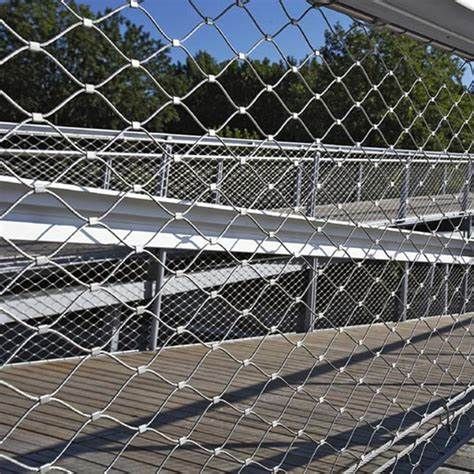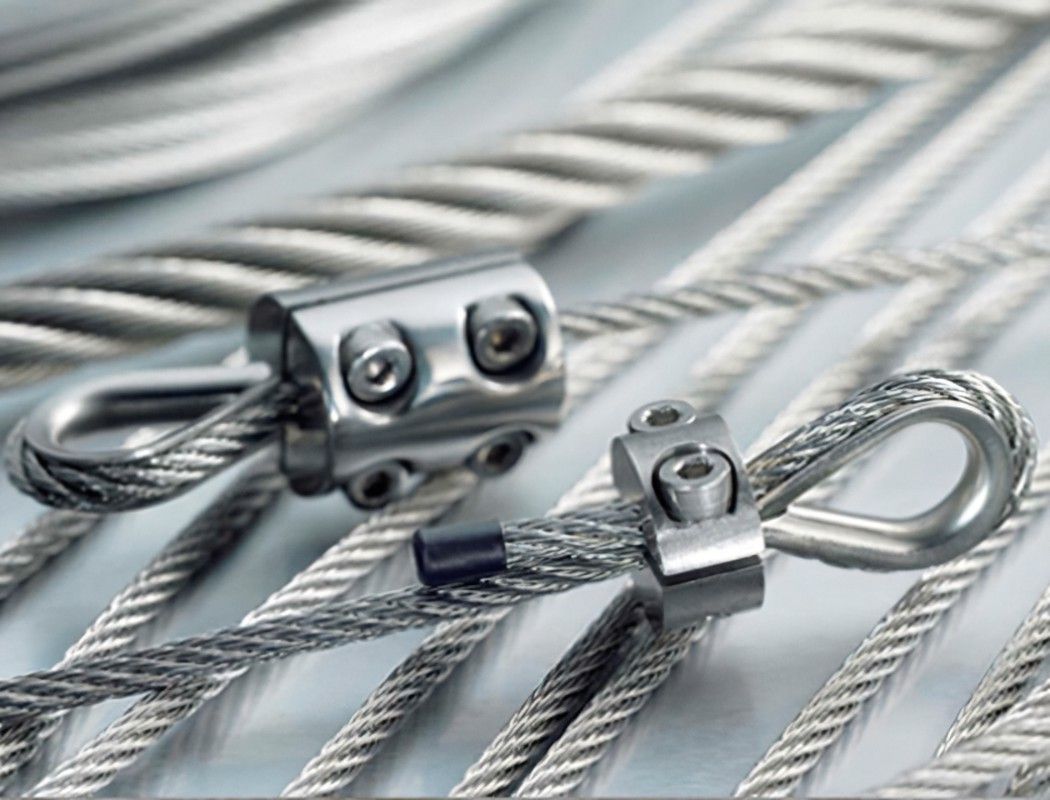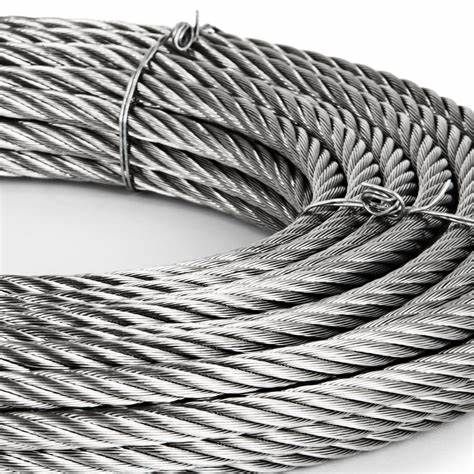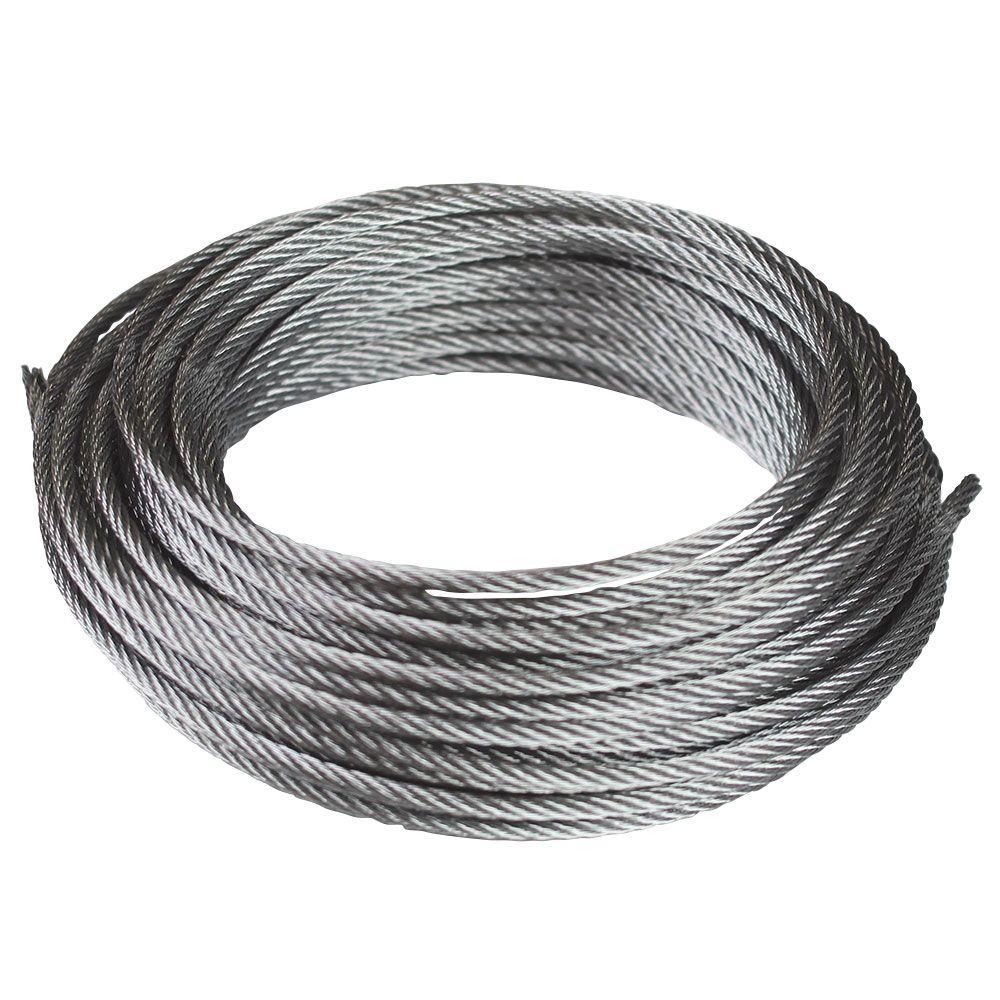1410, PARKSON, 44-60 ZHONGSHAN ROAD, QINGDAO, CHINA
Stainless Steel Wire rope is a type of metal wire twisted into a helix patterns to form an industrial strength rope. Larger width ropes using the laid rope pattern is called cable laid rope.
Stainless Steel Rope
Stainless Steel Rope is one of the many types of wire rope supplied by Rope Services Direct. It can be used in a variety of applications. It is most commonly used in the marine and water treatment industries, including yacht railings, rigging parts and for fishing trawlers on their net winches.

It is also commonly used around the home and garden, for things such as plant trellising and in architecture / building design, such as for barriers and balustrades. Lesser known industries it is used in include chemical processing plants, food and beverages, railways, bridge building, spacecraft, medicine, energy, culinary and many more.
Stainless Steel Wire Rope Fittings
Rope Services Direct have many stainless-steel end terminations available such as ferrules, sockets, rigging screws and wire rope thimbles. We can also supply stand alone anchors such as rope grips, shackles, snap hooks and swivel fittings, all in high quality stainless steel.

Does Stainless Steel Wire Rope Stretch?
Due to the fact that stainless steel wire rope is constructed of individual wires, which are spun into a strand, the amount of stretch will depend on the number of cables used, the properties and the benefits. For example, construction stretch results from the adjustment of wires and strands within a wire rope. When the load is first applied, the individual strands bed in, leading to a permanent constructional extension.
Conventional elastic stretch differs. In this case, the extension results from the increase in the length of the individual wires. Stress is proportional to strain, meaning if the yield point is exceeded, permanent deformation will occur, resulting in a "necking down" of the cross-section and a dramatic increase in length. If the yield point is not exceeded, elastic stretch can be fully recovered once the applies load is released, meaning the wire rope will typically return to it usual length. It should be noted that while all the austenitic grades of stainless steel have some degree of magnetic permeability, their higher chromium content means that they are less prone to work hardening than other grades of stainless steel. This gives them superior abrasion resistance and makes them ideal for use in demanding environments.
There can be many advantages to pre-stretching or pre-stressing wire rope prior to installation. These advantages can be grouped into two main categories, improved fatigue life and higher breaking strength.
Stainless Steel Wire Rope vs. Galvanized Steel Wire Rope
Stainless Steel Wire Rope
One of the greatest benefits of stainless steel wire rope is that it is suitable for nearly any application. While it may have a slightly higher cost than galvanized steel cable, stainless steel cable provides customers with greater ROI and maintains its high-strength qualities over its lifespan under most conditions. While not as strong as tungsten or tolerant of excessive temperatures, stainless steel mechanical wire rope is an incredibly effective cable construction material.

Stainless steel has high corrosion resistance due to it being treated with chromium. This additional element makes stainless steel suitable for use in moist environments, even when harmful salty conditions are present. Specifically in marine environments, for instance, stainless steel wire rope can be used for years without corroding. And in the medical devices field, stainless steel is commonly the metal of choice for many medical device instruments like endoscopes because of its high sanitization level and durability over many cycles makes it ideal.
Galvanized Steel Wire Rope
Galvanized steel is steel that has been dipped in a zinc coating, which gives it good corrosion-resistant qualities. But even with the addition of zinc, galvanized wire rope’s strength is weaker than stainless steel because of the presence of chromium, making the cable stronger and more tolerant of corrosive elements like saltwater. Galvanized cable will rust and corrode if salty wet conditions are present. And like stainless steel, galvanized steel cable ends will also weld together if they make contact with one another.
However, since it is made of coated steel, galvanized steel wire rope is typically less expensive than other wire rope alternatives.

Galvanized steel cable is often found in industrial applications, since items may brush up against the wire rope in the field, which again, are environmental conditions that galvanized steel tolerates quite well over time. For this and other reasons, Galvanized steel wire rope works exceptionally well in aerospace applications.
Which Type of Wire Rope Is Better?
Stainless steel wire rope is a cost-effective solution that works across a range of applications, is impervious to salty wetness and is stronger than galvanized steel cable. But galvanized steel wire rope is corrosion-resistant, except when salt is present and tolerates contact with itself far better than stainless steel cable.
Learning more Stainless Steel Wire Rope information, pls click below:
https://www.huahanmachinery.com/product/stainless-steel-wire-rope.html